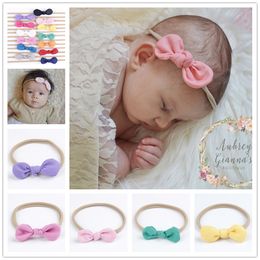How to Help a Baby or Toddler With Gas
Your baby or toddler is crying. You have checked their diaper and it is not that – it’s dry. They have no fever, so they are likely not sick. Chances are good that they have gas, thanks to their still-developing digestive systems.
There are things that you can do to keep your baby or toddler from getting gas in the first place, according to this article. But if it does happen, then here are things that you can do to help them get relief, which is good for both you and your baby/toddler.
Do Extra Work With Burping Them
Mealtime is usually the main culprit when it comes to gas. It may be filled with crying and tantrums – which then introduce a lot more air. So you should do a little work after they eat.
Just pick them up and start gently burping them. Getting rid of gas early on can possibly help prevent later problems.
Another thing you can do is lay your baby on their back and pedal their legs like they are riding a bicycle. This can help them expel the gas much quicker.
While you have them there on their backs, you can try gently massaging around their stomach area. This can be an effective way for them to get rid of any gas buildup that they have.
Bath Time!
Yes, having your baby relax in a nice warm baby tub can help ease any gas build-up that they have. Of course, be there for every second – it is dangerous to leave a baby alone in a tub, even if the water level is low.
In a warm bath, certain muscles will loosen … and your baby can get rid of the gas that is bothering them. They will also be clean, so that is taking care of two things at once.
Slow The Flow of Milk or Formula
This could be one reason why your baby is gassy. They may be getting too much air as they drink, since they are gulping so fast due to the fast flow from either your breast or the bottle nipple. If you are breastfeeding, try pumping for a little bit and then having the baby feed since the stream will be less. On the other hand, if you bottlefeed, you can get nipples that have a slower flow and let them drink more at their leisure.
See How Your Baby Is Latching
Breastfeeding mothers have to make sure that their baby latches onto the areola and has strong suction so that they can drink. If there is space between their mouth and the areola, that will also introduce air while they drink, which will then create more gas. So, you want to make sure that they are latching on properly.
Lactation consultants are great sources here. They can show you the best techniques to get the best latch. It often only takes a minor adjustment and then you will have a baby that is drinking comfortably.
Check How You Are Holding The Bottle
It’s not just a matter of getting the bottle and sticking the nipple in your baby’s mouth. It’s all about the angle of the bottle too. You want to make sure that they are just getting milk or formula in the nipple, not air.
Another important thing is to make sure that your powdered formula settles first after you have poured it into the bottle and shaken the bottle. There will be a lot of bubbles leftover, which will then give the baby gas.
Check the Food They Are Eating
Sometimes there are foods that can make them more prone to having gas. If you give your baby fruit juice, it might have sorbitol, which your baby might have a hard time processing.
There also might be instances where they are not able to process things that you have that get passed through breast milk, like extra dairy or caffeine. You might have to moderate your own diet to help your baby.
If you have done this and your baby/toddler is still showing signs of distress after several burps, then you might want to go to your pediatrician to make sure that nothing else is going on that might cause them to feel unwell. It’s far better to be safe than sorry.
Hopefully, by doing all of this, your baby may soon let out a giant belch that rattles windows and fall fast asleep. That will be the best result.

Leave a Reply